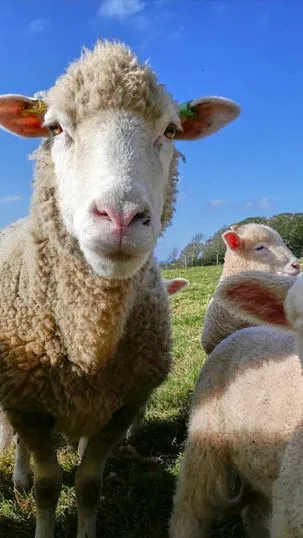
Farmer Brown: the renewable energy pioneer
The grantor championing ‘trembling leaves’ as the next renewable energy source
A grantor hailed as a renewable energy trailblazer more than a decade ago is living proof that you’re never too old to innovate.
Solar panel pioneer John Brown became the first UK landowner to launch an operational energy farm on his seven-acre plot of agricultural land in 2010. To the end of June last year his visionary Benbole Energy Farm venture has been joined by 1.2 million similar installations around the UK.
It’s a vindication of John and wife Fay’s decision to allow nearly 8,000 photovoltaic solar panels to be fitted onto their land near Wadebridge, the gateway to Cornwall’s tourist trail.
Now aged 82 and earning a more than comfortable five-figure living from the 1.8MW solar array, the former footballer turned dairy farmer is refusing to stop looking for the next best thing.

“I’m really interested in trembling leaves and am trying to find out more about how advanced the technology is before taking things further,” he says. “You have to keep trying new things or you don’t grow.”
John Brown
He practises what he preaches too and only went down the photovoltaic route after looking into the feasibility of a wind turbine to power mini electric cars for tourists to explore the narrow Kernow roads.
The leaves the former Bristol Rovers inside forward is currently fascinated by are the subject of various university studies – one of them at Warwick, near the National Grid HQ – into energy harvesting.
Researchers believe the low wind speed quiver, or vibration, of Aspen leaves could be mirrored in the mechanical movement of a device modelled on the leaf to generate and harvest electricity. Although it’s too early to tell if this so-called piezoelectricity could be an energy source of the future, John is more than happy to take a chance just as he did all those years ago. “I find advances like this and wind and hydrogen fascinating and would love to get involved as a guinea pig.”

Trembling leaves
John, whose land is crossed by National Grid’s Indian Queens to Taunton 400kV overhead power line, made himself a first pick for renewables because of Kernow’s above average sunshine.
The project, maintained and run by third-party engineers, provides enough electricity for around 750 homes in the nearby villages of St Kew and St Mabyn.
“I still have a wander round each day and check the inverters, the bit of kit that converts direct current (DC) electricity to alternating current (AC) which the Grid uses. If something doesn’t look right, I call the contractors and they’re there almost immediately,” says John.
“We were proud to have been in at the beginning. Now they’re starting to replace some panels with more efficient ones, so the technology is always moving forward. That’s why I’m so interested in the trembling leaves.”
John’s land – he also diversified in 1993 by building the nine-hole St Kew Highway golf course on an adjacent parcel of land – is perfect for solar. It’s relatively flat, away from urban and conservation areas and just 1.6 miles from a grid connection at an 11kV substation.

A lucrative gamble
He also added a motorhome park and a farm shop that’s now run by his daughter. But it’s the solar gamble, with its 10% return and guaranteed index-linked payments for at least the next 13 years, that has been the best shot in his football or farming career.
The scheme requires licensed electricity suppliers to pay a tariff to small-scale generators for electricity generated, whether or not the electricity is exported to the Grid or used on-site. John also receives a rent from the developer for the lease of the land.
A huge effort went into designing and planning the site, with four years’ worth of meteorological data around the site’s microclimate analysed. The field housing the solar panels receives 50 per cent more sun after midday, so the adjustable panels are positioned to face south-west. John says: “It was a gamble at the time, but it’s been a lucrative one which has also helped the local community and been a bit of a blueprint for other landowners around the country.
“Now I think the same will happen with the trembling leaves, so it’s something I intend to find out more about. I’m certainly not going to stop looking for the next big thing.”
John Brown

Could leaf power fuel the future?
Researchers using mathematical modelling to create a mechanical equivalent of the Aspen leaf say its flat and flexible stem could hold the key to harnessing new energy.
They tested its quiver in a gentle wind tunnel using a device with a cantilever beam like the flat stem of the leaf and a curved blade tip with a circular arc cross-section acting like the main leaf.
The blade was hung perpendicular to the flow, allowing the harvester to oscillate at low wind speeds like the leaf. The tests showed that the air flow became attached to the rear face of the blade when the blade's velocity was high enough, acting like an aerofoil.
In nature the leaf’s quiver is also boosted by the thin stem’s tendency to twist in the wind in two different directions. So the scientists recreated the basic properties of the flat stem to create enough mechanical movement to harvest power through vibrations.
Various academic studies are now looking into which mechanical, movement-based power generating technologies would be best to exploit the device in a forest-scale environment.
It’s too early to tell if this could this be the energy source of the future, but indications suggest it’s a possible source of clean energy and one we could be hearing more about in the future.
Farmer Brown’s the man on the spot

An all-energy powerhouse… and we’re not just talking about John Brown’s ground-breaking solar panel enterprise. Far from it. Because before he made his mark on the UK’s renewable energy scene, electricity grantor John was leaving his footprint on the beautiful game.
While playing for his local Wadebridge Town Football Club, he was offered a trial at Arsenal and later made 156 appearances for Bristol Rovers.. The inside forward scored 32 goals, balancing his career as a goal scorer with working part-time on his father’s farm near Wadebridge to earn him the terrace nickname Farmer Brown.
“They were very happy days. The highlight was scoring twice for Rovers in a Cup game at Eastville against West Ham… and a certain defender called Bobby Moore,” recalls John.
“Their manager, Ron Greenwood, came into our dressing room afterwards to say well done as I'd met him during the Arsenal trial. He didn’t play Bobby Moore in the return leg so that was a massive compliment.”
John’s football career, which also took in Plymouth Argyle, lasted from 1958 to 1968 when he returned to Wadebridge as player manager.
John adds: “They were great days, but in the end I had to help out on the farm because it was very difficult balancing the two jobs. I’ve got no regrets though and I'm glad to say I did both.”







